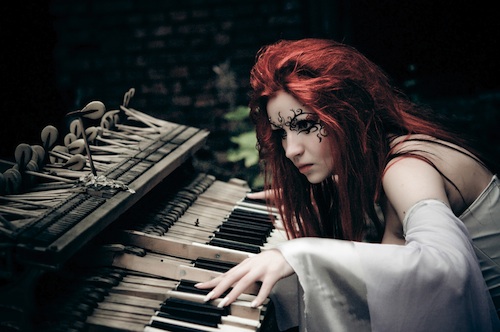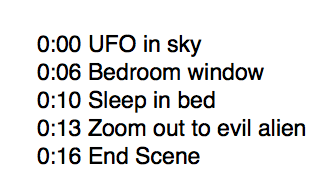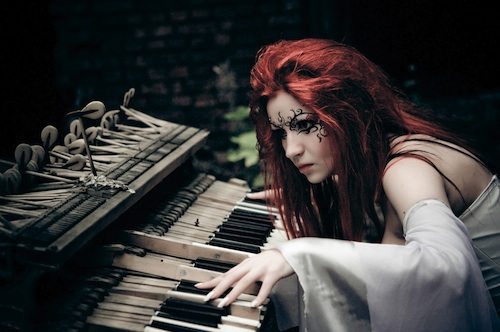Learn how to improvise your own Halloween horror music. Before laptops and Logic, TV and and Technicolor, early horror film composers at the dawn of the 20th century used improvisation to enhance the silent silver screens. They composed hauntingly dramatic scores, freaky monster music, and thrilling moments of Halloween horror by combining improvisation and traditional classical music scores.

Unlike horror film composers today that write directly for film digitally, early film composers like J.S. Zamecnik combined traditional classical music and original dramatic motifs into “playbooks” for the hundreds of pianists, theater orchestras, and organists who performed live at the picture palace.
Photoplay books like Sam Fox Moving Picture Music Vols. 1-3 provided musical direction and cues for improvisation. Other books simply pulled out sections from specific classical works and gave a list of excerpts and music cues to fit a specific film. The early silent film composers of these books used tried and true musical ideas to create spooky, scary, and dramatic music cues.
Contemporary film composers sync up audio to video using their iPad or laptops. While high-end film gigs use a live orchestra, conductor, and recording sessions, many indie composers simply use improvisation to find inspiration for their latest Halloween horror flick at home. A good improv can yield hours of good spooky material!
While most of the music you improvise won’t see the light of day, learning how to improvise these musical sketches in a variety of styles will improve both your compositional and ear training skills.
We’re going to use a particular short film clip as an example of how to improvise and then develop your score for a horror movie.
Halloween ear training improv practice
Start by watching the Halloween silent video excerpt below. In this excerpt, our hero Jettison sleeps peacefully as an evil alien being prepares to abduct him into a horrific alternate dimension:
Halloween Video Excerpt from Millikin University Percussion Ensemble Commission.
Watch the video a few times. Log important moments of tension, action, and drama.

Example timecode list for key moments in the video
If you have a program like Logic, Garageband, or Protools, import the video into your program and improvise with your MIDI controller.
If you don’t have a good program for film scoring, just grab your instrument and watch the video in your media player or online. Record your performances in Quicktime or Audacity by manually syncing the video:
- Hit Record
- Tap four beats to your metronome
- On beat four start the video by clicking PLAY
- Record your improvisation
Choose one or maybe a few simple instruments. The goal is not to make a finished track, but to develop a few ideas to use later.
Don’t worry about quantizing, mixing, or reverb!
Use harmonic tension to increase suspense, brass and percussion to build drama, and synth effects to match the images.
Add accents for scene changes and important moments.
Play with a variety of styles: fun, scary, quirky, dramatic, sci-fi, etc.
Here’s an example of the rough musical ‘sketch’ this might produce:
Clearly there are a lot of issues with this track so far!
Use your listening skills and hear where the track needs improvement. Quantize, automate channels, and add a fade-out. Improve video sync by moving dramatic accents. Change the tempo.
In the second version of this improvised score, I added an accelerando to the final measure:
In the final version of this music sketch, I added in a few sound effects and audio effects to give the track a more sci-fi feel. To minimize the horns at the end, I dropped a noisy rocket effect and blended it with the final accents to transition to the next scene where the alien abducts our hero:
Here’s the finished version with the audio set to video:
What d’you think? Can you hear and see how the score has been developed to better suit the video content?
Try it yourself! Here are a few exercises you could do with this clip, or any other horror movie excerpt:
Halloween Activity 1
Create a spooky soundtrack in the style of the old silent era films. Use piano, organs, and acoustic instruments. Keep rhythms and harmony simple.
Halloween Activity 2
Use only synthesized sounds and electronic instruments to create a scary sci-fi Halloween soundtrack. Think Forbidden Planet or Blade Runner.
Halloween Activity 3
Get dramatic! Create an orchestral Halloween sound in your home studio. Start with piano and then orchestrate the piano part for full orchestra. Add brass, strings, percussion, and woodwinds. Avoid using too much ‘tutti’ (all instruments playing at the same time). Mix and match the musical palette to create spooky ensemble sounds.
Recommended resources
Download excerpts from all three volumes of J.S. Zamecnik’s Moving Pictures at the Petrucci Library. The Petrucci Library provides musicians with both old and new scores, from opera to string quartets to tape music. Use the simple search engine to find scores by composer, era, and instrumentation.
Find out more about photoplay music in the Silent Era at the Mont Alto’s Motion Picture Orchestra website.
Share your spooky Halloween music with us! Post a link to your album or improv in the comments below.
We’ll continue tomorrow with some great examples of effective film music and the techniques used. Until then, if you have any questions, just give a shout!







